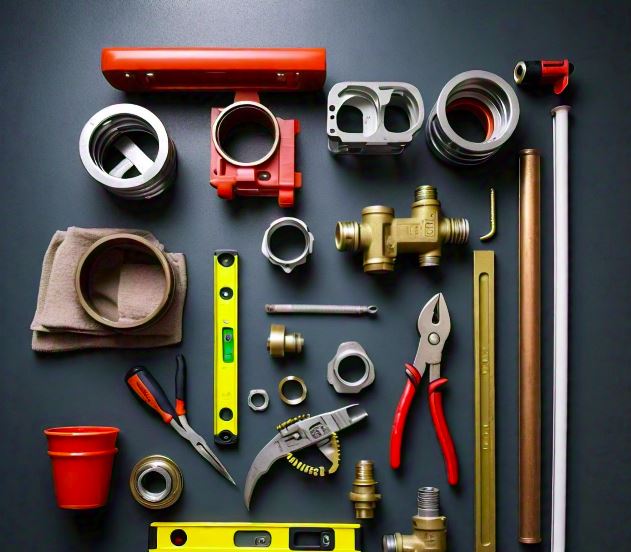Tools Needed for Rough-In Plumbing
Introduction
Rough-in plumbing is a crucial stage in constructing or remodeling any building. It involves laying out the essential pipes and connections for water supply, drainage, and venting before the walls and floors are finished.
Having the right tools is essential for ensuring a successful rough-in plumbing installation. This guide will outline the key tools needed for rough-in plumbing, providing a comprehensive overview for both DIY enthusiasts and professional plumbers.
Basic Measuring and Layout Tools
- Tape Measure: Essential for taking accurate measurements of pipes, fittings, and the distances between fixtures and connections.
- Carpenter’s Level: Used to ensure that pipes and fixtures are level, which is crucial for proper drainage and installation.
- Plumb Bob: Helps to establish true vertical lines, ensuring that pipes and vents are correctly aligned.
Cutting and Deburring Tools
- Pipe Cutters: Specifically designed for cutting various types of pipes (e.g., PVC, copper, PEX). They ensure a clean, straight cut.
- Hacksaw: Useful for cutting through metal pipes or when a pipe cutter isn’t available.
- Deburring Tool: Removes burrs and rough edges from the inside and outside of cut pipes, ensuring a smooth fit and preventing leaks.
Joining and Fitting Tools
- Pipe Wrenches: Essential for gripping and turning pipes and fittings, especially those made of metal.
- Adjustable Wrenches: Versatile tools used for tightening and loosening nuts and bolts.
- Channel Lock Pliers: Also known as groove joint pliers, these are used for gripping and holding pipes and fittings.
- Pipe Vise: Holds pipes securely in place while cutting or threading.
Drilling and Hole Cutting Tools
- Hole Saw: Used for cutting large holes in walls, floors, or ceilings to run pipes through.
- Power Drill: Essential for making precise holes quickly and efficiently. A drill with various bit sizes is ideal.
- Spade Bits: Attachments for the power drill, used for drilling larger holes for pipes.
Sealing and Fastening Tools
- Soldering Kit: Includes a torch, solder, and flux, used for joining copper pipes.
- PVC Cement and Primer: Necessary for bonding PVC pipes and fittings. Primer cleans and prepares the surfaces, while cement creates a strong, leak-proof bond.
- Teflon Tape: Used on threaded pipe joints to create a leak-proof seal.
Specialty Tools
- PEX Crimping Tools: Used for crimping PEX pipe connections, ensuring secure and leak-free joints.
- Pressure Test Gauge: Used to test the plumbing system for leaks by applying pressure and monitoring for drops.
- Stub-Out Supports: Hold pipes in place within the wall cavity until they can be connected to fixtures.
Safety Equipment
- Gloves: Protect hands from sharp edges and hot surfaces when soldering.
- Safety Glasses: Shield eyes from debris and splashes of chemicals like PVC cement or primer.
- Hearing Protection: Important when using loud tools like drills and saws.
Advanced Tools for Professionals
- Pipe Threader: Used for threading the ends of pipes, especially for gas and some water pipes.
- Laser Level: Provides precise leveling and alignment for long runs of pipe.
- Inspection Camera: Allows plumbers to see inside pipes and walls, ensuring everything is properly aligned and free from obstructions.
Conclusion
Having the right tools is crucial for successful rough-in plumbing. From basic measuring tools to advanced equipment, each tool plays a vital role in ensuring that the plumbing system is installed correctly and efficiently. Whether you’re a DIY enthusiast or a professional plumber, investing in high-quality tools can save time, prevent mistakes, and ensure a smooth, trouble-free plumbing installation






